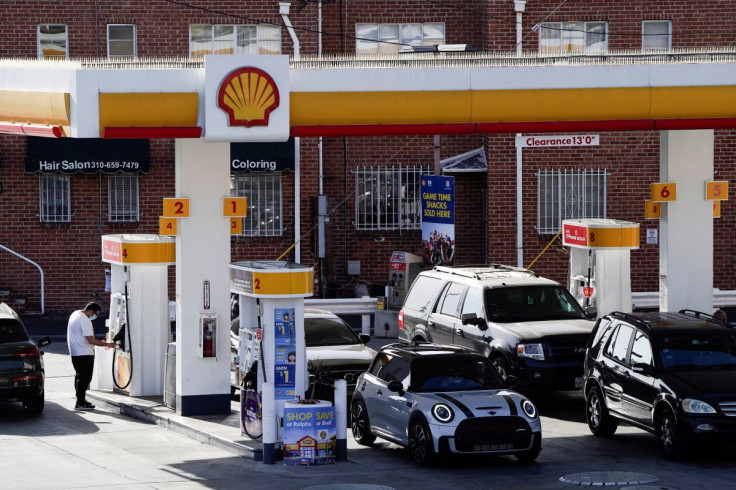U.S. Consumer Sentiment Near 11-year Low; Import Prices Unchanged In April

U.S. consumer sentiment slumped to its lowest level in nearly 11 years in early May as worries about inflation persisted, but consumer spending remains underpinned by a strong labor market and massive savings, which should keep the economy expanding.
The University of Michigan's survey on Friday showed the deterioration in sentiment was across all demographics, as well as geographical and political affiliation. Gasoline prices and the stock market have a heavy weighting in the survey.
Gasoline prices resumed their upward trend this month, setting an average record high of $4.432 per gallon on Friday, according to AAA. Fears that the Federal Reserve will have to aggressively tighten monetary policy to bring down inflation have unleashed a massive stock sell-off on Wall Street.
"Just because consumers resent paying higher prices and are suffering limited availability doesn't mean they aren't still making those purchases," said Michael Pearce, a senior U.S. economist at Capital Economics in New York. "As goods shortages and prices ease over the rest of this year, we expect confidence will bounce back."
The University of Michigan' preliminary consumer sentiment index tumbled 9.4% to 59.1 early this month, the lowest reading since August 2011. Economists polled by Reuters had forecast the index dipping to 64.
The survey's gauge of current economic conditions dropped 8.4% to 63.6. That was the lowest reading since 2013, and 36% of consumers attributed their negative assessment to inflation. Its measure of consumer expectations declined 9.9% to 56.3.
Consumers viewed buying conditions for long-lasting manufactured goods as the worst since the survey started tracking the series in 1978.
"The dip in confidence does not warrant any immediate change to our near-term forecast for consumer spending as the relationship between spending and sentiment is loose, particularly in the short run," said Scott Hoyt, a senior economist at Moody's Analytics in West Chester, Pennsylvania.
Even as consumers stressed about high prices, long-term inflation expectations appeared to be anchored.
The survey's one-year inflation expectations were at 5.4% for the third straight month. Its five-year inflation expectations were unchanged at 3.0% for the fourth month in a row.
Stocks on Wall Street rebounded after a tumultuous week, while the dollar fell against a basket of currencies. U.S. Treasury yields rose.
INFLATION LIKELY PEAKED
Though inflation is likely to remain elevated, there are growing signs that price pressures have peaked.
A separate report from the Labor Department showed import prices were unexpectedly flat in April as a decline in the cost of petroleum offset gains in food and other products. Import prices had surged 2.9% in March.
Economists had forecast import prices, which exclude tariffs, would climb 0.6%. In the 12 months through April, import prices rose 12.0% after accelerating 13.0% in the year through March.
Government data this week showed monthly consumer prices increased at the slowest pace in eight months, while the gain in producer prices was the smallest since last September.
With oil prices drifting higher in May, monthly import, consumer and producer prices are likely to pick up. Annual inflation rates are expected to continue edging lower, though likely to stay above the Fed's 2% target.
The deceleration is mostly the result of last year's big increases dropping out of the calculation.
The U.S. central last week raised its policy interest rate by half a percentage point, the biggest hike in 22 years, and said it would begin trimming its bond holdings next month. The Fed started raising rates in March.
Imported fuel prices dropped 2.4% last month after soaring 17.3% in March. Petroleum prices declined 2.9%, while the cost of imported food increased 0.9%. Prices of imported capital goods rose 0.4%, matching March's gain.
The cost of imported consumer goods excluding motor vehicles was unchanged. Prices of imported motor vehicles and parts climbed 0.3%. Excluding fuel and food, import prices rose 0.4%. These so-called core import prices advanced 1.3% in March. They increased 6.9% on a year-on-year basis in April.
Some of the slowdown in the monthly core import price gains reflect the dollar's strength against the currencies of the United States' main trade partners. The greenback has gained about 2.65% on a trade-weighted basis since the Fed started raising interest rates.
The report also showed export prices rose 0.6% in April after surging 4.1% in March. Prices for agricultural exports advanced 1.1%, a slowdown from the 4.3% acceleration logged in March. Higher prices in April for corn, cotton, meat and nuts more than offset lower prices for wheat and soybeans.
Nonagricultural export prices rose 0.5%. Export prices increased 18.0% on a year-on-year basis in April. That followed an 18.6% advance in March.
© Copyright Thomson Reuters {{Year}}. All rights reserved.





















